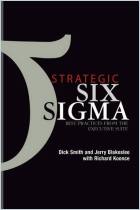
Read or listen offline
Amazon KindleRecommendation
No one knows Six Sigma, which seeks near perfect customer satisfaction, like George Eckes, the consultant who literally wrote the book on it (The Six Sigma Revolution: How General Electric and Others Turned Process into Profits). In his second book, Eckes emphasizes the importance of molding organizational culture to generate broad acceptance of a Six Sigma initiative, using illustrative examples from his workshops. He describes ways to overcome internal resistance to change, to sell the program’s benefits and to get key people as well as the masses on board. If you are launching a Six Sigma program, Eckes provides many specific suggestions of strategies you can employ. But because much of Eckes’ wisdom can be applied more generally to organizational change efforts, getAbstract recommends this insightful book to any executive, whether or not Six Sigma is your strategy of choice.
Summary
About the Author
George Eckes is the founder and principal consultant of Eckes & Associates, Inc., a consulting group specializing in Six Sigma training and implementation, results-driven continuous improvement, organizational development and managing change. His clients include GE Capital, Pfizer, Honeywell and Volvo. He has published numerous papers on the topic of performance improvement and wrote The Six Sigma Revolution about establishing Six Sigma programs.























Comment on this summary or Démarrer une discussion